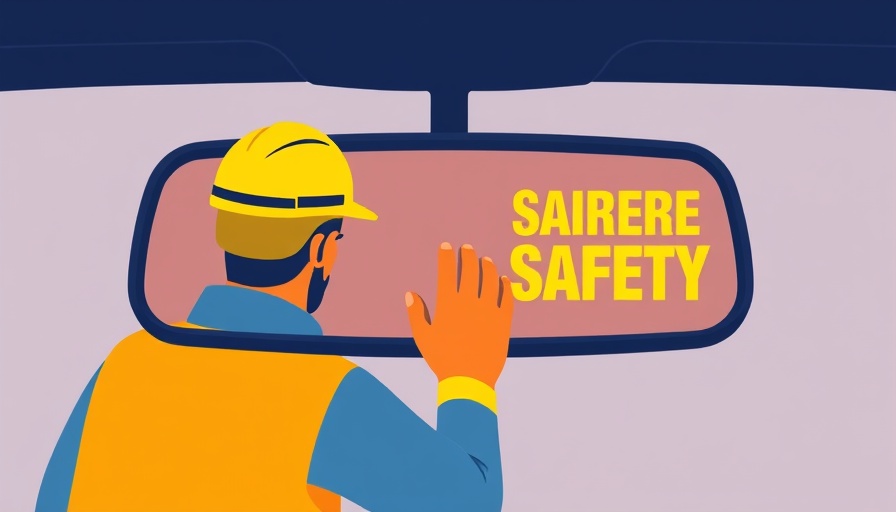
Construction Safety: The Critical Importance of Visibility
In September 2022, a tragic incident at a construction site in Georgia underscored the crucial need for visibility in workplace safety. A dump truck operator, failing to detect unseen hazards while backing up, suffered a fatal accident due to a faulty braking system. The Occupational Safety and Health Administration (OSHA) highlights that such backover incidents occur frequently in construction zones—often due to operators' inability to see people or objects behind them.
Improving Safety Through Common Sense Measures
To combat preventable accidents, OSHA has launched the #MirrorCheck initiative, aimed at raising awareness about backover safety. Employers and workers are encouraged to adopt simple yet effective practices: correctly adjusting mirrors to reduce blind spots, utilizing trained spotters to direct operators, and installing backup cameras to enhance visibility. Additionally, performing daily inspections of machinery and alarms is vital. According to OSHA, taking these steps can significantly mitigate the risk of accidents in high-traffic construction areas.
The Importance of Loud Alarms in Noisy Environments
Construction sites are inherently loud, complicating communication and making it difficult for workers to hear alarms. Many workers wear hearing protection, amplifying the challenge of detecting critical warnings. OSHA advocates for alarm systems with sufficient volume to penetrate ambient noise, ensuring all workers can hear them. This attention to detail can mean the difference between a regular workday and a life-altering accident.
Why Visibility Matters in HR Compliance and Workplace Culture
For HR compliance officers and policy writers, understanding workplace safety, including visibility, is essential. By integrating safety measures into labor practices and maintaining compliance with employment regulations, companies can foster a culture that values each employee's well-being. This commitment not only aligns with EEOC guidelines but also enhances workplace morale and productivity.
Taking Action: A Shared Responsibility
As the data suggests, accidents like the one in Georgia remind us that visibility in the workplace isn't just a matter of individual responsibility but a collective one. Employers must prioritize safety practices, ensuring that all workers feel secure in their environment. Good visibility is indeed no accident, but an integral part of every construction site’s operational strategy. Every small measure—be it mirror adjustments or loud alarms—can contribute to a safer work experience.
 Add Row
Add Row  Add
Add 




Write A Comment